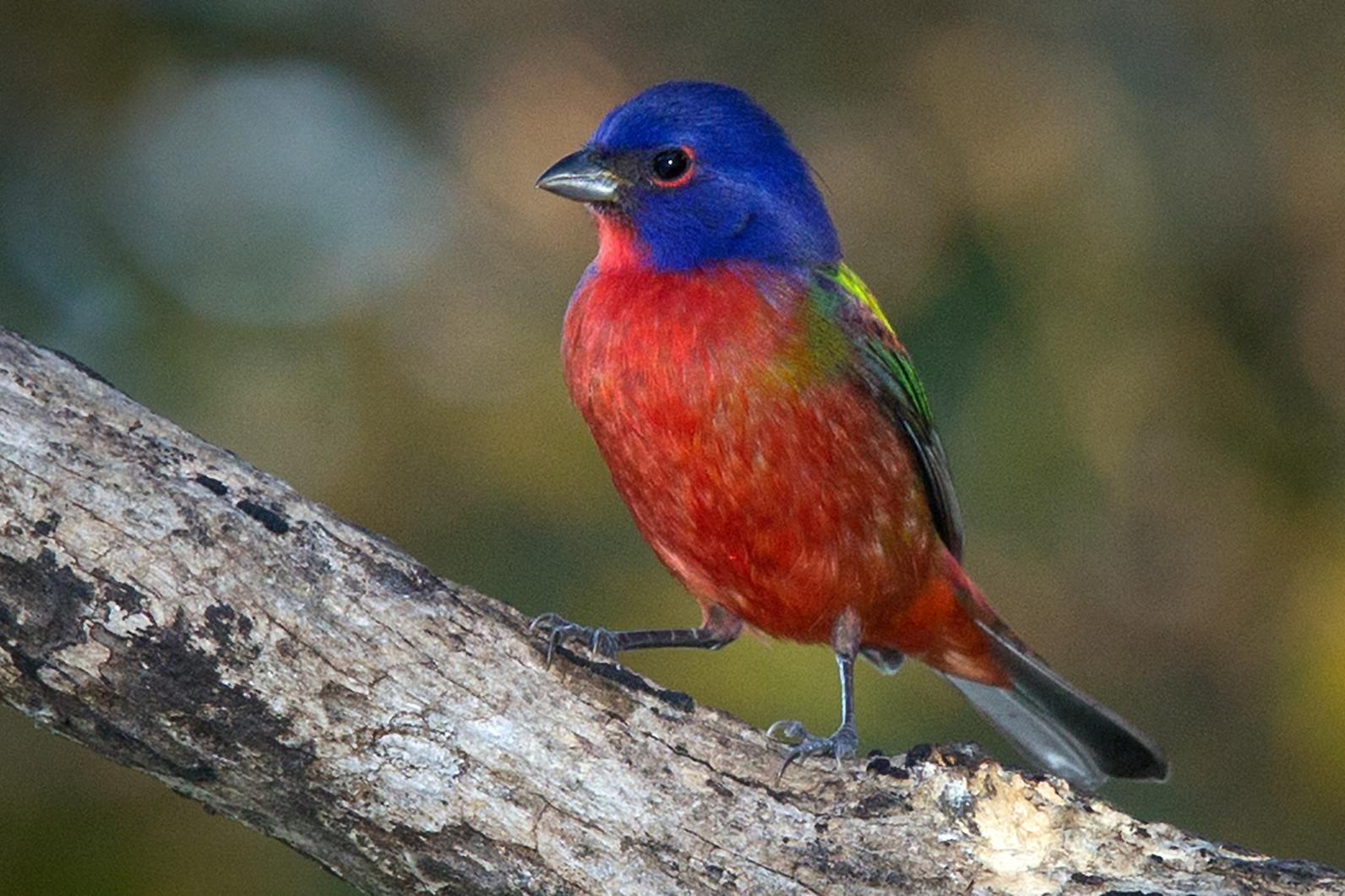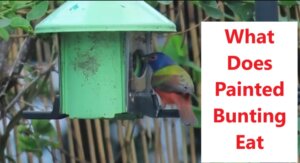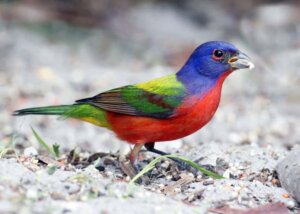Are Painted Buntings Friendly? Discover Their True Nature
Yes, Painted Buntings are friendly birds. They are known for their vibrant colors and gentle nature.
These beautiful birds often capture the attention of bird watchers and nature enthusiasts. Painted Buntings, with their striking plumage, are a delight to observe. They are commonly found in the southern United States during the breeding season. Their friendly demeanor makes them a favorite among bird lovers.
These small, colorful birds are generally not aggressive and can be quite approachable. Observing them in their natural habitat can be a peaceful and enjoyable experience. Whether you are a seasoned bird watcher or a curious beginner, encountering a Painted Bunting is always a treat. So, are these birds friendly? Absolutely, and their charming presence is sure to brighten your day.
Introduction To Painted Buntings
Painted Buntings are among the most colorful birds in North America. Their vibrant plumage and melodic songs make them a favorite for bird enthusiasts. But, are they friendly? To understand their behavior, let’s first get to know these beautiful birds better.
Colorful Appearance
The Painted Bunting is renowned for its striking colors. Males display a mix of blue, green, and red feathers. This vivid coloration makes them easy to spot and admire. Females, on the other hand, are a bright green. This helps them blend into their surroundings and stay safe from predators.
Habitat And Range
Painted Buntings prefer habitats with dense vegetation. They are often found in thickets, brushy areas, and woodland edges. These birds thrive in the southeastern United States during summer. During winter, they migrate to Mexico, Central America, and the Caribbean. This range helps them find food and suitable breeding grounds throughout the year.

Credit: nc.audubon.org
Behavior In The Wild
Painted Buntings are enchanting birds known for their vibrant plumage. They exhibit fascinating behaviors in the wild. These behaviors include feeding habits, mating, and nesting. Understanding their behavior helps bird enthusiasts appreciate these avian wonders.
Feeding Habits
Painted Buntings primarily feed on seeds. They prefer seeds from grasses and weeds. They also consume insects during the breeding season. This dietary shift ensures they meet their protein needs. Their diet includes:
- Grass seeds
- Weed seeds
- Small insects
- Spiders
These birds often forage on the ground. They search for food in low vegetation. Their feeding habits change based on the season.
Mating And Nesting
During the breeding season, male Painted Buntings become territorial. They sing to attract females. Their song is a series of high-pitched notes. Once a mate is found, they engage in courtship displays.
The female builds the nest. She chooses a hidden spot in dense vegetation. The nest is cup-shaped and made of grass. It is lined with softer materials like animal hair.
The female lays 3-4 eggs. She incubates them for about 11-12 days. After hatching, both parents feed the chicks. The young leave the nest about 9 days after hatching.
Painted Buntings’ mating and nesting behavior is a marvel to observe. Their dedication to raising their young ensures the species thrives.
Interactions With Humans
Painted Buntings, with their vibrant colors, often intrigue bird watchers. Known for their shyness, they rarely approach humans closely. Observing them from a distance ensures they feel safe.
Painted Buntings are beautiful birds admired for their vibrant colors. These birds often intrigue bird watchers and nature enthusiasts. But how do they interact with humans? Let’s explore their interactions in nature and in backyards.Observing In Nature
Painted Buntings are usually shy around humans. They prefer staying in dense foliage. Observing them in nature requires patience. Binoculars can help spot these birds from a distance. Early morning is the best time to see them. They are most active during this period. Listen for their sweet, melodic songs. This helps locate them in the wild. Remember to move slowly and quietly. This prevents scaring them away.Attracting To Backyard
Attracting Painted Buntings to your backyard is possible. They love areas with dense shrubs and bushes. Providing food is a key strategy. They enjoy seeds, especially white millet. Bird feeders should be placed in quiet spots. Fresh water also attracts these birds. A bird bath can serve this purpose. Planting native shrubs can create a welcoming habitat. These plants offer both food and shelter. The birds will feel safe and return often. “`Social Behavior
Painted Buntings are known for their striking colors and pleasant songs. But what about their social behavior? Are they friendly birds, or do they prefer solitude? Their social interactions can reveal much about their nature.
Territorial Traits
Painted Buntings are highly territorial birds. The males often claim and defend their territory. They sing loudly to mark their space. This singing helps keep other males away. Their bright colors also play a role in these territorial displays. The males use their vivid feathers to assert dominance. This behavior is most common during the breeding season. During this time, they become more aggressive. They often chase away other birds from their area.
Communication Methods
Communication among Painted Buntings is fascinating. They use a mix of songs and calls to interact. The males sing complex songs to attract females. These songs vary from bird to bird. It’s like each has its unique tune. Calls, on the other hand, are simpler. They use calls to alert others to danger. Calls also help maintain contact within a flock. Visual signals are another key method. Their colorful plumage sends various messages. Bright colors can signal health and vitality. They can also indicate readiness to mate.
Myths And Misconceptions
There are many myths and misconceptions about painted buntings. Some people think they are aggressive. Others believe they can’t adapt to domestic environments. Let’s explore these myths and uncover the truth.
Aggressiveness
One common myth is that painted buntings are aggressive birds. This is not entirely true. Painted buntings are territorial during the breeding season. They may become defensive to protect their nests. This behavior is natural and not a sign of general aggressiveness.
Outside the breeding season, painted buntings are quite peaceful. They coexist well with other birds. They are not known to pick fights or cause trouble. Their bright colors might make them seem bold. But their behavior is often shy and reserved.
Domestic Adaptability
Another misconception is that painted buntings cannot adapt to domestic environments. This is also not accurate. Painted buntings can be attracted to backyards with the right setup. They enjoy areas with thick cover and plenty of food sources.
To attract painted buntings, you can provide bird feeders with seeds. Native plants and shrubs can also create a welcoming environment. Painted buntings appreciate water sources like birdbaths. They are more likely to visit if they feel safe and have their needs met.
While they may not become as tame as some other birds, painted buntings can still thrive in domestic settings. They bring vibrant colors and beauty to any garden.

Credit: www.youtube.com
Conservation Efforts
Conservation efforts for Painted Buntings are crucial. These vibrant birds face many challenges. Ensuring their survival requires collective action. Below, we explore the threats to their population and the protective measures in place.
Threats To Population
Painted Buntings face numerous threats. Habitat loss is a major concern. Urban development destroys their natural homes. Deforestation removes essential nesting sites. These changes reduce their living areas.
Another threat is illegal trapping. People capture these birds for the pet trade. This practice decreases their wild population. Climate change also impacts their survival. Altered weather patterns affect food availability and migration.
Protective Measures
Several protective measures help Painted Buntings. Conservationists work to preserve habitats. They focus on protecting forests and wetlands. Creating safe environments is key.
Education programs raise awareness. People learn about the importance of these birds. They understand the need to protect them. Conservation laws also play a role. Regulations prevent illegal trapping and trade.
Community involvement is essential. Local groups monitor bird populations. They report any illegal activities. Together, these efforts aim to secure a future for Painted Buntings.

Credit: alaudubon.org
Frequently Asked Questions
Are Painted Buntings Good Pets?
Painted Buntings are not suitable as pets. They are wild birds that thrive in their natural habitat. Keeping them in captivity can stress them and affect their health.
Do Painted Buntings Interact With Humans?
Painted Buntings are generally shy around humans. They prefer to avoid human interaction, but they may visit backyard feeders.
What Attracts Painted Buntings?
Painted Buntings are attracted to bird feeders with seeds, especially white millet. Native plants and shrubs also attract them by providing food and shelter.
Are Painted Buntings Aggressive?
Painted Buntings are not aggressive. However, males can be territorial during the breeding season to protect their nesting sites.
Conclusion
Painted Buntings can be friendly, but they are also shy. They need time to trust humans. Patience and gentle behavior help. These birds enjoy quiet gardens and feeders. Their bright colors bring joy to any yard. Watching them can be a peaceful hobby.
So, create a welcoming space. Enjoy the beauty of Painted Buntings in your garden. Their presence can brighten your day.
Hello Dear, I'm Poli Kolymnia, owner of many birds (including budgies).
With a deep passion for these feathered companions, I'm here to share my expertise and extensive knowledge on birds care.
My articles cover essential topics like diet, housing, care, and health, providing practical tips to help you create a happy and thriving environment for your birds.




